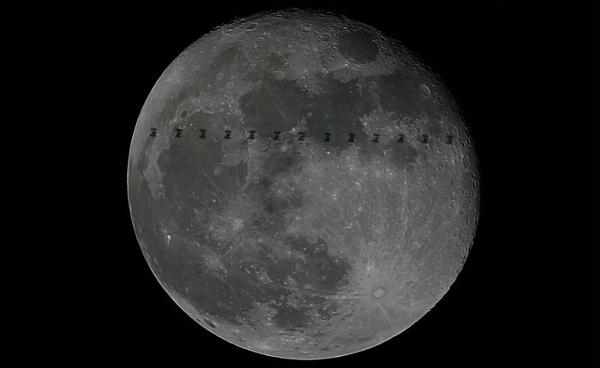Help your students become young astronomers with CESAR
5 July 2017
CESAR is an educational ESA initiative whose main objective is to engage school students with the wonders of astronomy and, more generally, science and technology. CESAR stands for ‘Cooperation through Education in Science and Astronomy Research.’ |
| The International Space Station crosses the Moon. Credit: ESA (CESAR Team) |
Through CESAR, students (supported by their teachers) have access to telescopes, tools, and the expertise of ESA scientists to make real astronomical observations, collect scientific data and analyse the results, applying the same methodology used in real life by professional scientists. The CESAR programme also offers teachers the tools and resources necessary to prepare and support their students during the CESAR experience, as well as dedicated teacher conferences to inspire them to use space as a context when teaching STEM subjects (Science, Technology, Engineering and Mathematics) at school.
-
Space Science Experience
Primary and secondary school teachers from ESA’s Member States* can register their class for a unique 2-hour session of real hands-on astronomy at ESAC. The students will be guided by ESA scientists through a group activity during which they will be assigned a ‘mission’ within a space science theme that the teachers can choose at the time of registration (based on the students’ age and curriculum). To accomplish their mission, the students will have to answer questions, use imagery taken by the CESAR telescopes and other ESA space missions, analyse the data, and communicate their results. The teachers will be provided in advance with explanations and resources to prepare their students to the experience itself, including a videoconference with a scientist (if technically feasible at the school).
Learn more -
Science cases
This is a series of classroom resources (teacher’s guide, student worksheets, background information, etc) on astronomical topics ranging from the Sun to the deep universe, based on astronomical data and images collected by the CESAR telescopes. These resources are available for download, and can be used by the teachers as a basis for their STEM lessons in the classroom.
Learn more -
CESAR teacher conferences
During the year, ESA scientists and the CESAR team organise conferences and lectures to introduce astronomy and space science to teachers, provide hints and inspiration for the use of space in their lessons, and make them interact with real space experts.
Learn more -
Watch the Sun Live
Since August 2016, the Helios CESAR Solar Observatory operates daily, weather permitting, and provides images of the Sun every minute of the day. These images can be viewed directly online.
See the daily images of the Sun
The CESAR telescopes
The CESAR programme provides students with access to several ground-based observatories:
- Two solar telescopes (visible light) that operate during the day
- Two night telescopes (visible light)
These telescopes are all based at, or in the vicinity of, ESA’s European Space Astronomy Centre (ESAC) near Madrid, Spain. They are all controlled by experts working at the CESAR Control Room located at ESAC.
Learn more about the CESAR observing facilities.
Learn more about the CESAR observing facilities
CESAR is the result of a partnership between the European Space Agency (ESA), the Spanish National Institute for Aerospace Technology (INTA) and Ingeniería de Sistemas para la Defensa de España (ISDEFE).
